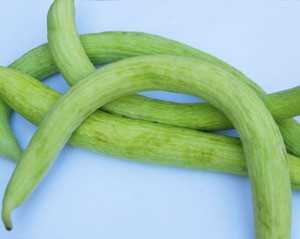Reminding you that Wednesday boxes will arrive on Thursday this week!
________________________
It’s a Cucumber! No, it’s a Melon! Yes, it’s Time to Welcome…….. the Fakus!
Last week, (nibbling away) we harvested our first fakus beds. I know that I will soon be getting phone calls claiming that “this week I received two portions of zucchini and no cucumbers.” To take preventive measures, I suggest using the trick I learned from Tzipi of Jerusalem (and it’s so simple, of course): the fakus’ stalk resembles that of a cucumber, not zucchini! If you received a light-colored elongated vegetable you cannot define, check out its stalk (the part where it attaches to the plant): if it is wide and star-shaped like a zucchini, well… it’s a zucchini. If it’s thin and willowy like a cucumber, then, say hi to our friend the fakus.
Who is he? Here is The Fakus, in all its glory.
Tiberius Julius Caesar Augustus was known for his fondness for cucumbers. He would eat cucumbers every day of the year, necessitating the Roman farmers to develop artificial methods to grow the vegetable year-long. According to The Natural History of Pliny, by Pliny the Elder (Book XIX, Chapter 23), “Indeed, he [Tiberius] was never without it; for he had raised beds made in frames upon wheels, by means of which the cucumbers were moved and exposed to the full heat of the sun; while, in winter, they were withdrawn, and placed under the protection of frames glazed with mirrorstone.”
However…
Tiberius was probably not munching on the cucumber we all know and love, i.e., the Cucumis Sativus, but rather on the light and somewhat hairy fakus, aka Armenian cucumber, which is actually… a melon. Also coined the “snake melon,” in botanical terms, it is the Cucumis melo var. flexuosus melon. However, we do not let the fakus mature like our melons—we pick it in its crunchy sweet youth, like the cucumbers (which is a good thing, really, because the fakus just wouldn’t ever become a real tasty melon at full maturity).
There are all sorts of fakus varieties: light green, striped, long and curved or short and light. At Chubeza we grow two types: the small fakus (about the length of a cucumber), and one which is long and curved, resembling its English name “snake melon.”
Melons and cucumbers belong to the same family, but they are two different entities with diverse characteristics. When you look at the different leaves, you can tell that fakus leaves are rounder and less serrated, similar to their melon brothers. Its taste and appearance are closer to the cucumber, which is why it is easy to confuse them, but not really: the fakus is not thorny at all. It is covered with soft fuzz and is sweeter and crunchier than the cucumber. However, like the cucumber, it is picked in its youth, before its seeds mature, which is why it is not as soft as a melon.
The fakus sometimes tends to be bitter. Various attempts to overcome this bitterness have proven that we must carefully choose the plants whose seeds are to be kept for next year, making certain that they are non-bitter plants. We hope you will not receive a bitter fakus, but to be on the safe side, when you slice them up into a salad, first nibble at the point where the fakus was attached to the plant. That’s where the bitterness begins. If you like what you taste, slice away, straight into the salad bowl. If it’s bitter, take a bite further down. Sometimes the bitterness remains contained at the end.
The fakus is lauded by chefs as part of the trend to return to local, homegrown baladi food. It does look like the cucumbers eaten here in the past, before the arrival of the garden cucumber. Last week we were visited by Dr. Moshe Ra’anan, who has written many articles about plants and animals in the Scriptures. He photographed our nice fakus, and wrote a few words about them. I learned from him that during the Mishna there was actually a verb “to fakus” (“לפקס”), related to the ripening of the fakus. Our commentators offered two different interpretations for its definition: 1. the stage at which the fuzz is shed from the fruit 2. the stages at which the flower dries up and falls from the fruit. Either way, when the fakus’s are fakused, you can place them in your wicker basket, sling it over your shoulder, place the flowers in your hair and join the parade of the first fruits… straight to the kitchen! Because the nice thing about it is that other than to wash, slice, add some salt if desired and joyfully bite into it, the fakus can be preserved, just like a cucumber, producing delicious pickles, and even fried or stuffed like a zucchini. And all this while being …a melon!
Confused? That’s OK, as long as you eat in good health!
Wishing you a Shavuot festival of first fruits full of happiness and hope. May we reap in joy and rejoice with family and friends.
Chag Sameach!
Alon, Bat Ami, Ya’ara and the Chubeza team
_________________________
What’s Joining the Fakus in This Week’s Boxes?
Monday: Lettuce, beets, dill/coriander, tomatoes, scallions/leeks, celeriac, cucumbers/fakus, spinach, purple kohlrabi, zucchini, carrots (small boxes only)
In the large box, in addition: Cabbage, garlic, parsley, Swiss chard
Wednesday:
______________________________
Fakus recipes:
Fakus and radish salad and stuffed fakus – by Hedai Offaim


